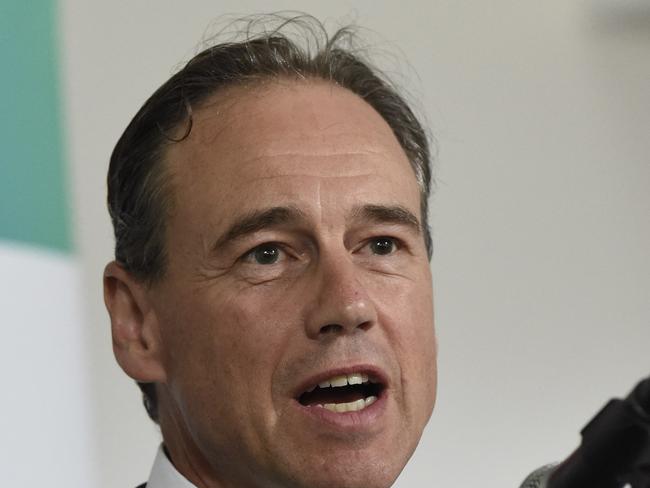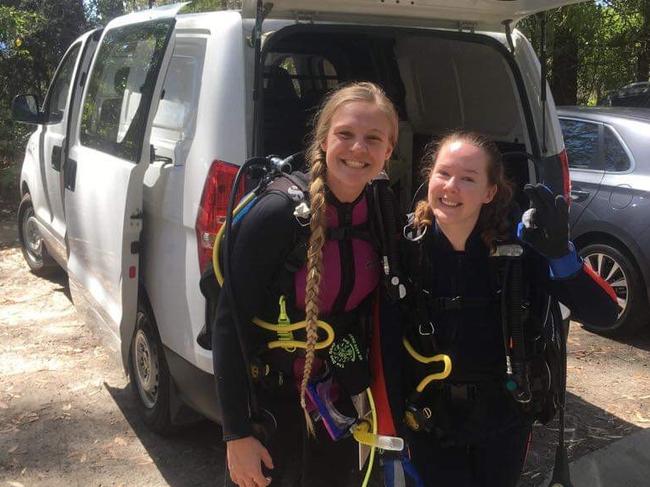Pain is killing us, making us unemployed and costing the economy $140 billion a year
Exclusive: Millions of Australians suffering chronic pain are becoming addicted to opioid drugs while they wait up to four years for specialist care — and the bill is truly staggering.

Health
Don't miss out on the headlines from Health. Followed categories will be added to My News.
Exclusive: Millions of Australians suffering chronic pain are becoming addicted to opioid drugs while they wait up to four years for specialist care - and the bill is a shocking $140 billion a year.
A damning new report to be launched by Health Minister Greg Hunt today shows chronic pain is killing three people a day, causing depression and unemployment, adding $360 million to the welfare bill.
More than 3.2 million Australians are crippled by headache, back ache, arthritis and other chronic pain the Deloitte Access Economics report for Pain Australia shows.
“The rising rate of deaths associated with prescription opioids is just one indicator that we aren’t dealing with chronic pain well in this country,” said Associate Professor Malcolm Hogg, Head of Pain Services at Melbourne Health, and Painaustralia Director.
There were 823 deaths and 3011 hospitalisations for prescription opioid misuse in 2017-18, costing the health system $13.4 million.
A further 10,756 Australians used medicines to treat opioid misuse the report found at a cost of $60 million, the report found.
Aged care pain despite funding boost
Major Medicare shake-up in Budget
Parents putting kids at risk online

Underlying the huge social and financial cost of pain is poor treatment.
There are only 316 pain specialists across the country to treat the millions living in pain, only one in every 100 people with chronic pain ever receives the multidisciplinary care they need.
To solve the problem Pain Australia wants access to specialist pain clinics, usually run by public hospitals, doubled at a cost of $70 million a year.
The measure would actually save more than four times as much as it costs by getting people off subsidised medicines and welfare and back to work the report shows
A specialist led national GP training program costing $45 million to train GPs how to better manage chronic pain is also needed.
A switch to doctors prescribing atypical opioids rather than conventional opioids could potentially save as many as 249 lives per year and yield savings of $209 million in overdose-related costs alone.

The report makes a compelling case for change by breaking down the alarming cost of pain.
Last year alone, people living with chronic pain spent $2.7 billion in out of their own pockets on medicines, physiotherapy, and other health costs to manage their pain, the analysis shows.
The health system spent a further $12.2 billion on hospitals visits, subsidised medicines and Medicare rebates for those in pain.
A further $12.7 billion was spent on care, aids like wheelchairs and home modifications.
On average, Australians with chronic pain were estimated to be absent from work for an additional 8.6 days per year compared to people without chronic pain and this cost the economy $3.2 billion in 2018.
People with chronic pain were 30 per cent less likely to be employed than those without pain and this cost them and the economy $36.18 billion or $16,338 per working age Australian living with chronic pain.
People with chronic pain also experience a substantial reduction in their quality of life, valued at an additional $66.1 billion and close to 1.45 million Australians living with chronic pain also live with depression and anxiety.

“Without genuine reform, quickly implemented, our research shows the cost of chronic pain will climb from $139.3 billion today to $215 billion by 2050, putting even more pressure on the back pockets of patients and an already struggling health system that is ill-equipped to adequately manage chronic pain,” said Pain Australia CEO Carol Bennett.
Sarah Fowler ended up in a wheelchair when she was in fifth grade because of severe neurological pain caused by chronic regional pain syndrome.
“I’d walk through cobwebs and my body would scream at me, someone would touch my skin and it would feel like a knife,” she said.
Unable to access specialist pain clinics Sarah was misdiagnosed as having a mental illness and teased at school by students and others who did not believe her pain was real.
“Considering I was a 12-year-old girl stuck in a wheelchair in a capital city and couldn’t get treatment that shows we need more services,” she said.

The Canberra student finally got access to a pain clinic at Randwick Hospital in Year Seven and got specialist treatment including physiotherapy, hydrotherapy and cognitive behavioural programs that allowed her to retrain her brain to cope with her agony.
She finished Year 12 with high marks and is now studying engineering at Canberra University.
“The pain is always there but my brain is able to deal with it without much impact on myself,” she said.
Originally published as Pain is killing us, making us unemployed and costing the economy $140 billion a year


